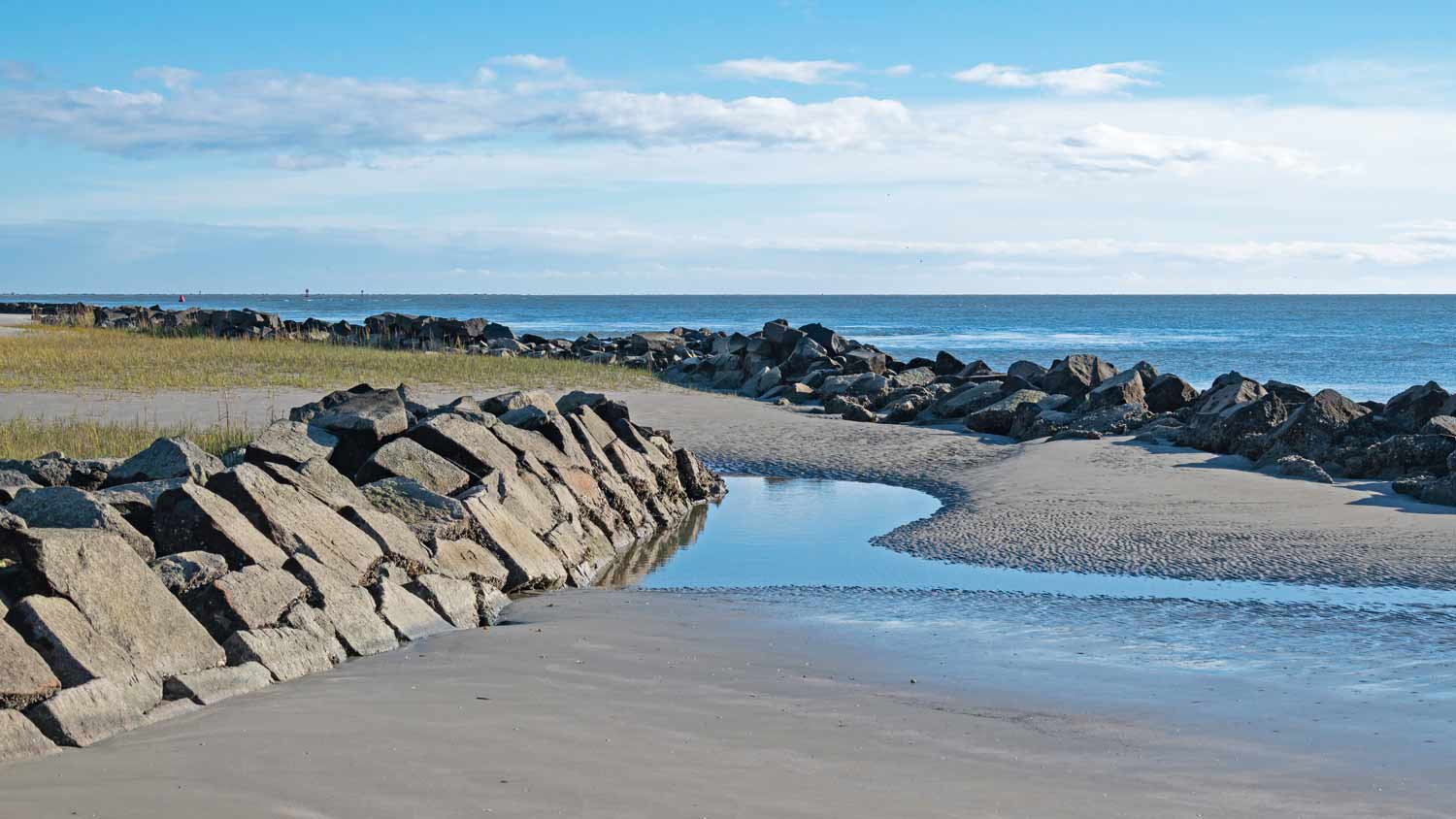
Xeriscape costs depend on materials, the size of your yard, and if you DIY. This guide will help you determine what your xeriscaping project will cost.
This clever landscaping technique can wash away your erosion concerns


Riprap is an erosion control solution that consists of large rocks and stones.
It’s used along lakes, rivers, creeks, and other waterways to prevent erosion.
If you have a waterfront property, you can build a seawall with riprap.
Riprap is durable, effective, and aesthetically pleasing, but it’s also expensive to install and may disrupt natural habitats.
If you want to stop erosion from swallowing up your yard and stripping your soil of key nutrients, riprap could be just what you need. But what is riprap, exactly? And how can you use it to protect your property? Let’s break it down.
Riprap is a layer of large, angular rocks and stones placed next to bodies of water, along slopes or hills, or near drainage systems. Its main purpose is to prevent erosion caused by moving water (including waves and currents) and runoff.
When installing riprap, a professional will use a mix of rock sizes ranging from half a foot to several feet in diameter. The exact size you need will depend on the incline of the slope and how quickly the nearby water is moving, but steeper slopes and faster-moving water will require larger rocks. To fill in the gaps between stones, pros often use soil or smaller rocks.

Designed to prevent erosion, you’ll often find riprap near rivers, lakes, channels, and ditches. Riprap is a popular material for seawalls since it can effectively absorb the energy from waves and protect the shoreline from erosion.
Riprap is also an important part of many stormwater management systems. When used outside of storm drains, the rocks can help control runoff by slowing the flow of rushing water.
On average, installing riprap costs between $70 and $400 per linear foot. However, your final cost depends on multiple factors, including the type and size of the rocks, the amount of riprap needed, your property’s landscape, and your location. Also, depending on your project, you might need to hire several professionals to install riprap, including a structural engineer and a drainage expert.
Like other erosion control solutions, there are pros and cons to riprap. Here are the main advantages and disadvantages.
| Pros | Cons |
|---|---|
| Effective | Expensive |
| Strong and durable | Difficult to install |
| Aesthetically appealing | May not be eco-friendly |
It’s effective: When designed and installed properly, riprap can prevent erosion, according to the U.S. Environmental Protection Agency (EPA).
It’s strong and durable: Riprap consists of large, sturdy rocks designed to stay in place and withstand harsh conditions. It doesn’t require much maintenance, either—other than annual visual inspections and vegetation removal.
It’s aesthetically appealing: It’s subjective, but many people enjoy the look of riprap along a body of water. For example, on a pond, the variety of rocks creates a rugged (yet polished) aesthetic that’s often more attractive than an unfinished edge.
It’s expensive: Riprap projects require large amounts of stone, which is bulky and often expensive. Plus, transporting such vast quantities of rock is pricey and time-consuming, increasing the cost of the project.
It can be difficult to install: When installing riprap, crews may have to work on sloped land or near fast-moving bodies of water. Operating heavy machinery to install riprap on these hard-to-access sites can be challenging.
It can disrupt natural habitats: Adding riprap changes the natural landscape of an area. It can be difficult for native animals to navigate and make it harder for them to access water.
Still not sure if riprap is right for your project? Contact a landscaper near you to discuss the specifics of your property.
From average costs to expert advice, get all the answers you need to get your job done.

Xeriscape costs depend on materials, the size of your yard, and if you DIY. This guide will help you determine what your xeriscaping project will cost.
.jpg?impolicy=leadImage)
Landscaping your yard adds curb appeal and expands your home’s living space into the outdoors. Learn how much landscaping costs for various projects.

Leveling your yard can help with drainage and prevent damage to your home. Learn the cost to level a yard in Columbus, OH, and what factors can affect the price.

There are reasons to grade or slope your yard beyond aesthetics—drainage is the main one. Read on and learn how to have an informed discussion with your pro.

Overseeding your lawn can help fill in sparse areas and grow thick, lush grass without starting over. Find out how to overseed a lawn successfully.

Riprap prevents erosion and protects your shoreline when done right. Learn who to hire for riprap and how to find a licensed professional.